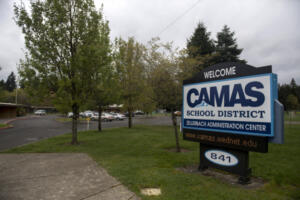A majority of Camas teachers have voted to authorize a potential strike if the teachers’ union and Camas School District cannot reach agreement on a new contract by Monday, Aug. 28, the scheduled start of the 2023-24 school year in Camas.
“Unfortunately, the district is still refusing to agree to the basic things our students and members need,” Camas teacher Michael Sanchez, vice president of the Camas Education Association, the union serving 450 Camas educators, and a member of the CEA’s contract bargaining team, said in a recorded statement to the community released Thursday, Aug. 24. “CSD’s actions forced the CEA membership to authorize a strike on Aug. 22. Today, we informed the district of our intention to strike starting Aug. 28, the first day of school.”





